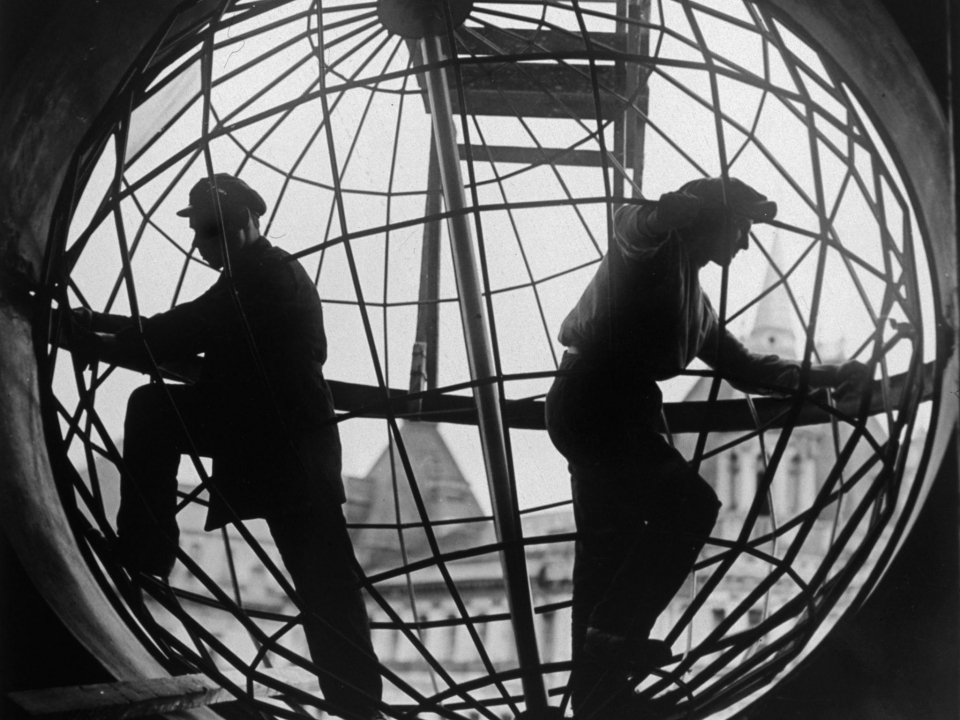As part of our series commemorating the centenary of the Russian Revolution, Oliver Bennett looks at the radical architecture that emerged.
About to open in the new and improved Design Museum in London is Imagine Moscow: Architecture, Propaganda, Revolution – looking back at all the unrealised post-revolutionary plans to recreate Moscow in the 1920s and 30s. The Royal Academy is currently showing Revolution: Russian Art 1917-1932 while in November, Tate Modern’s Red Star over Russia looms over Bankside – a collection of “early experiments and diverse practices that formed a new visual culture for a nation that covered one sixth of the Earth”. 1
- Imagine Moscow: Architecture, Propaganda, Revolution is at the Design Museum, London, from 15 March-4 June: designmuseum.org
- Calvert 22 Foundation's 2017 season, The Future Remains: Revisiting Revolution, presents a series of events and talks. The next will be Russian Art and the 20th Century on Thursday 9 March, 19:00: calvert22.org
- Revolution: Russian Art 1917-1932 is at the Royal Academy until 17 April: royalacademy.org.uk
- Red Star Over Russia is at Tate Modern, London from 8 November 2017-18 February 2018: tate.org.uk
- 1. Will Strong of Calvert 22 Foundation – a non-profit set up in 2009 by Russian London-based economist Nonna Materkova to improve the understanding of Russian and Soviet art and culture – finds a deep interest in post-revolutionary architecture at the moment. “Within the last year it has even become fashionable,” he says. “The revolutionary legacy of architecture is particularly poignant as much wasn’t built and much has been destroyed.” As programme manager of Calvert 22 Foundation, Strong is overseeing a season on the Russian Revolution, and identifies a “nostalgia for the future” and a fascination with the lost spirit of social utopianism in the age of market forces.
This architecture seems like a new discovery: a recherché taste for urban trendies and the rise of interest in the “historic avant-garde”, to use the term used in museum circles. But at the time it was highly influential, says Charley. “There was a lot of cultural traffic between Moscow, Berlin and Paris.” Indeed, Melnikov designed the Soviet Pavilion at the ground-breaking Paris Exposition of Decorative Arts in 1925, with rooms designed by Alexander Rodchenko. Western architects based in the west pitched for work including Erich Mendelsohn, whose great legacy in the UK is the De La Warr Pavilion in Bexhill-on-Sea, who created the Red Banner Textile Factory in St Petersburg.
Charley is concerned that the current wave of interest might divorce these buildings from their context. “It tends to be depoliticised,” he says. “Sometimes, the things that motivated these people are forgotten. It was an explosive and progressive cultural revolution – a mixture of aesthetics and politics and a revolution to transform every part of everyday life.”
As Eszter Steierhoffer adds, “They were trying to create new blueprint for life: a new society, a new architecture and a ‘new man’.” And “woman” – for one of the themes of the orginal Narkomfin was the lack of domestic kitchens, which was a kind of female serfdom. “Eating was a communal activity, and food prepared in ‘kitchen factories’,” she says. “Children were raised in communal nurseries.” Ginzburg wanted to express a Constructivist idea: that of the “social condenser”: a kind of radical communalism.
....
And in Putin’s kingdom, is there much take-up of this architectural patrimony, from a time when Russia really did lead the way? Not really. “If you thought that the architecture of neo-liberalism was bad in the UK, then come to Moscow,” says Charley. Developers are looking at some of the sites – although there was a groundswell of interest in the country to preserve the Shukhov Tower. But as interest grows in what some are calling the “New East”, and as Russian money increasingly engages with its history in auction houses and salerooms, the taste for revolution may yet come home.
